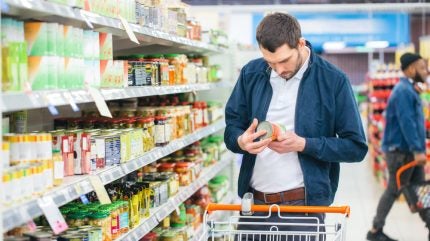
Packaging today plays a crucial role in how consumers perceive and interact with products. It’s no longer just about keeping items safe—it’s about meeting evolving expectations around sustainability, convenience, clarity, and aesthetics.
As shoppers become increasingly mindful of environmental impact and usability, brands must adapt their packaging strategies to satisfy these priorities, ensuring lasting appeal and customer loyalty.

Discover B2B Marketing That Performs
Combine business intelligence and editorial excellence to reach engaged professionals across 36 leading media platforms.
Understanding what modern packaging consumers care about in the long term helps businesses create solutions that stand the test of time, resonate with customers, and contribute positively to the planet.
Here’s a closer look at the key packaging attributes that matter most to today’s buyers.
Sustainability as a foundational expectation
Sustainability remains the cornerstone of modern packaging preferences. Consumers now expect brands to take responsibility for the environmental footprint of their packaging materials and design.
This has led to a strong demand for packaging that is recyclable, biodegradable, or made from recycled content.

US Tariffs are shifting - will you react or anticipate?
Don’t let policy changes catch you off guard. Stay proactive with real-time data and expert analysis.
By GlobalDataPlastic-free packaging and minimalistic designs that reduce waste are especially favoured. Shoppers look for clear labelling indicating eco-friendly credentials, such as certification marks or information on recyclability.
These factors build trust and influence purchasing decisions, particularly among younger and eco-conscious consumers.
Brands embracing circular packaging models—where materials are reused, recycled, or composted—are well positioned to satisfy long-term consumer expectations.
Sustainable packaging is not simply a trend but a fundamental shift in how products are presented and perceived.
Convenience that fits modern lifestyles
Convenience is a defining feature of packaging that consumers care about over time. Busy lifestyles mean shoppers value packaging that is easy to open, reseal, and carry. Features like resealable zippers, ergonomic shapes, and portion-controlled packs enhance usability and encourage repeat purchases.
The rise of ecommerce has also changed the game. Packaging designed for online shopping must protect products while being easy to unpack and dispose of responsibly. Over-packaging or difficult-to-open parcels frustrate consumers and can damage brand perception.
Portable packaging that supports on-the-go consumption—whether for snacks, beverages, or personal care products—is another critical consideration.
Ultimately, packaging that complements a consumer’s lifestyle by saving time and effort will remain a priority.
Clarity, design, and product protection in balance
Clear, honest information on packaging is vital for building consumer confidence. Shoppers want to quickly find details about ingredients, usage instructions, allergens, and environmental impact.
Transparent communication helps avoid confusion and meets regulatory demands while supporting informed purchasing.
At the same time, visually appealing packaging draws attention and strengthens brand identity. Thoughtful design choices—such as consistent colours, clean typography, and high-quality images—can turn packaging into a powerful marketing tool.
Yet, aesthetics cannot come at the expense of protection. Packaging must safeguard products during shipping and storage to ensure quality and customer satisfaction. The best packaging strikes a balance between beauty, clarity, and durability.
Looking ahead: packaging built to last in consumer appeal
Long-term consumer care for packaging revolves around a combination of responsibility, ease, transparency, and visual impact. As environmental concerns deepen and shopping habits evolve, brands that integrate these elements will stand out.
Future packaging solutions will likely focus on smarter materials, innovative designs, and honest messaging that clearly reflects a product’s values. Whether through refillable containers, compostable mailers, or minimalist formats, packaging will continue to play a pivotal role in consumer choice.
By prioritising what modern consumers care about in the long term, companies can build trust, reduce environmental impact, and deliver a superior user experience—ensuring packaging remains a vital asset rather than an afterthought.





